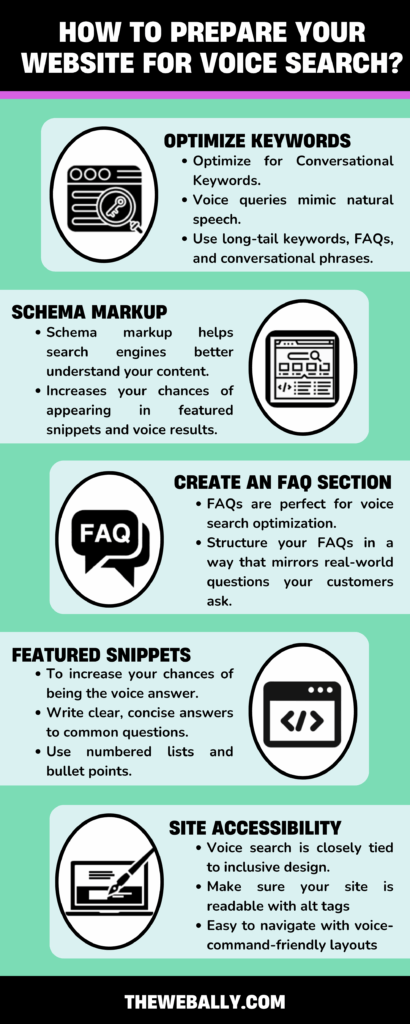Voice search is no longer a futuristic concept—it’s already transforming the way users interact with the internet. With smart speakers in millions of homes and virtual assistants integrated into smartphones, consumers are increasingly turning to voice commands to find information, make purchases, and interact with brands.
As a digital marketing agency, we’ve seen the shift firsthand: websites that are optimized for voice search are gaining a competitive edge in both visibility and user experience. In this article, we’ll explore the future of voice search and how to prepare your website for this growing trend.
According to Statista, over 50% of US households are projected to own a smart speaker by 2025. Meanwhile, billions of voice searches are being performed each month across Google Assistant, Siri, Alexa, and Cortana.
Voice queries are often:
This shift in user behavior demands a new approach to SEO and content optimization.
Many voice assistants pull answers directly from featured snippets—the so-called “position zero.” That means if your content is optimized for voice, you’re more likely to become the default spoken answer.

“Near me” and location-specific queries will continue to grow, especially for mobile users and local businesses.
As voice tech becomes more inclusive, optimizing for local dialects and languages will be key in global markets.
Shopping via voice is on the rise. Websites must prepare for a future where product discovery and purchases are done entirely through spoken commands.
From booking appointments to controlling smart home devices, voice will become a dominant input across digital experiences—not just search.
Voice queries mimic natural speech. Instead of targeting just “digital marketing agency,” optimize for questions like:
Use long-tail keywords, FAQs, and conversational phrases in your content.
Schema markup helps search engines better understand your content and increases your chances of appearing in featured snippets and voice results.
FAQs are perfect for voice search optimization. Voice assistants often pull direct answers from FAQ-style content, especially when it answers:
Structure your FAQs in a way that mirrors real-world questions your customers ask.
Voice searches are typically performed on mobile or smart devices. Ensure your site is:
Use Google Page Speed Insights and Core Web Vitals as benchmarks.
Optimize your Google Business Profile and include NAP (Name, Address, Phone Number) consistency across all listings. Also:
To increase your chances of being the voice answer:
Voice search is closely tied to inclusive design. Make sure your site is:
Bonus Tip: Use Voice Search Tools
Tools like Answer The Public, Also Asked, or Google’s “People Also Ask” feature can help you discover real voice-style questions to target in your content.
Additionally, consider using AI transcription tools (like Otter or Descript) to convert podcasts, webinars, or videos into content that can rank for voice searches.
Real-World Use Case: Local Business & Voice Search
Imagine a local dental clinic optimizing for voice search. Instead of only targeting “dentist in Miami,” they would create content around:
By answering these specific queries on an FAQ page, blog posts, and service pages—while integrating local schema markup—they greatly increase their chance of becoming the top voice search result.
Voice search is not just a trend—it’s a paradigm shift. As more users adopt hands-free browsing and AI assistants, businesses that fail to optimize will miss out on high-intent traffic and visibility.
By implementing a strategy focused on natural language, local optimization, structured data, and user-friendly design, you’re not just preparing for the future—you’re setting your website up for dominance in today’s voice-first world.
The Web Ally specializes in advanced SEO and structured content strategies tailored for the evolving search landscape. Let’s future-proof your web presence—starting today. Contact us now!
Self-service covers every aspect of life these days, but we still believe in the power of having someone to talk to. Maybe it's to bounce off ideas and explore new opportunities. Maybe it's just to say hello.
In any case, we will only use your contact details to get in touch with you regarding your enquiry - and nothing else!